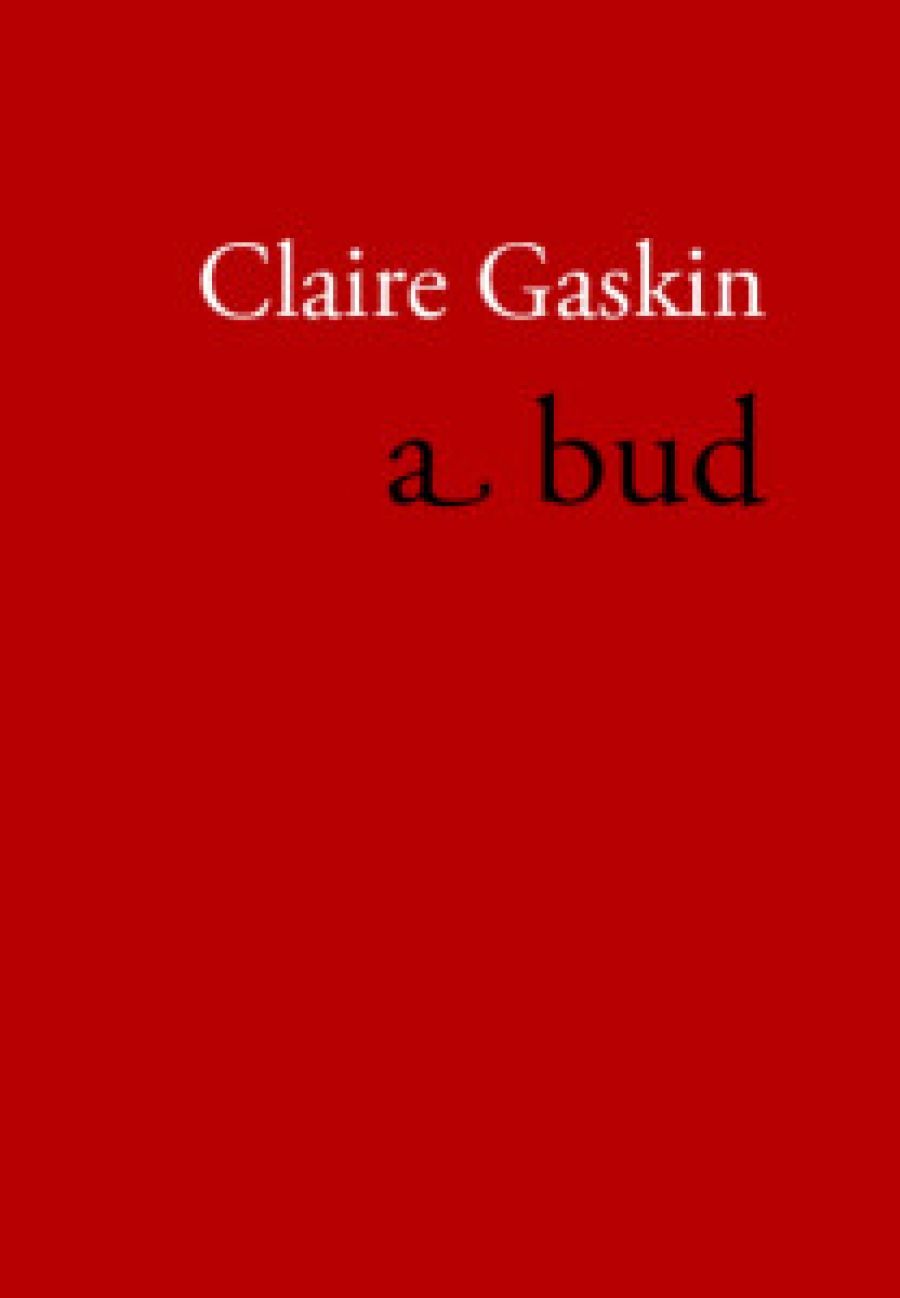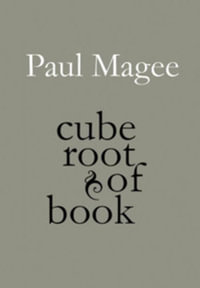
- Free Article: No
- Contents Category: Poetry
- Review Article: Yes
- Article Title: Roots
- Online Only: No
- Custom Highlight Text:
Paul Magee’s first book, Cube Root of Book, digs through the roots of life. He revisits past incidents, examining what draws him to poetry. Magee’s accurate translations from Virgil, Horace, Ovid and Catullus, interspersed throughout, heighten his subject matter but contrast with his own less proven work. Yet these translations draw attention to his fragmented, deracinated modern life, apparent in the various styles he employs, from the explanatory and prose-like to the chopped expostulations of love or lament. Some translations are playful – ‘Sleep embraced their weary limbs … and I looked up the word for patefactus’ (‘Aeneid II’) – while others superimpose order, as in ‘Mr Ruddock’s speechwriter (Philippic 1)’: ‘The asylum in the desert swallows the phrase, a throat / a drain with birds circling, a gate.’
- Book 1 Title: A Bud
- Book 1 Biblio: John Leonard Press, $21.95 pb, 78 pp
- Book 2 Title: Cube Root of Book
- Book 2 Biblio: John Leonard Press, $21.95 pb, 74 pp
- Book 2 Cover Small (400 x 600):

- Book 2 Cover (800 x 1200):

- Book 2 Cover Path (no longer required): images/ABR_Digitising_2021/Archives_and_Online_Exclusives/magee-cube-root-of-book.jpg
Magee, by most unusually dividing Cube Root of Book into eleven chapters, pleads for the sort of reading given to the epic poems. Each chapter draws an arc of discovery. Cube Root of Book begins with a question that this book-length poem seeks to answer: ‘But what else is left / to halt this falling / unprophesied night? …’
Art is proposed as a bulwark against mortality. There are many elegiac sections, heralded by Virgil’s description of Dido’s suicide and Catullus’s lament for his brother. One section explores the phenomenon of phantom limbs. This is analogous to Magee’s broader view that loss is experienced as an ever-present reality. His interest in different states of sanity and insanity also reflects this: what is lost or missing shadows what is left behind, just as past writers shadow the poet.
Magee’s stormy, haunted effusions rush through places and languages – German, Italian, Russian – revisiting past scenes of sorrow or inspiration, just as Aeneas pleads with Dido in the underworld. Fascination with language catapults this book:
‘How do you like Russia?’ and I
‘I love it here!’ automatically, while the policemen trailed
At the ATM
I replied, ‘Tell him, I’m a poet.’ So he did …
The policeman looked pained, or like a stuffed pin, surprised
and said, with a look of swallowing incomprehension, ‘Why?’
(‘Automatic teller machine’)
Yet there is also awareness that art is a desperate attempt to revivify, and that words are an approximation: ‘Shall I compare thee to a Shakespearean sonnet? / The rain forms beads on a cosmetic cheek.’
In Claire Gaskin’s long-awaited, first substantial book, A Bud, her poems explore turning points. Usually beginning with an image or a memorable line, these poems unfold into puzzling scenes that are sometimes evasive but, at their best, become celebratory: ‘The wind around the house as wrapping paper’, ‘Honey on the path / Every breath a door’. Gaskin often uses the present tense, implying an instant recreation of thoughts and images as they occur. Some looser forms of pantoum create a formal complexity, with somewhat disconnected lines gradually forced into new meaning through each juxtaposition.
time is chilled in water …
this is the day when the heart attacks the bird in the sky
a knife under the pillow for cutting memory
(‘in her hands’)
Meaning here is not consciously sought through logic or intellect but through a partly surrealist mysticism, where observation precedes meaning – ‘The flywire cuts the sky into tiny squares. // In answer to your question there is none. // In answer to the fall is the ground’ – or can be aided by often crazily long titles. Gaskin’s poems replicate the slipperiness of sensation and feeling, rarely with any overt continuous commentary; rather, they are often pointillist tics of images, often metaphor, forming matter as they progress. ‘Peg’ and ‘The wind doubts’ are less painterly and more direct, while other poems are accretions of statements:
I can’t be less for you or silent after sex
the uncovered breast of the moon says money has family
a man hitching up his pants coming out of a brothel
to avoid loneliness we have each other
(‘Each other’)
Gaskin’s A Bud is shaped around repeated talismanic words, particularly ‘earth’, ‘air–wind–breath’, ‘fire–flame’, ‘water–river’, and many images and words repeat in different poems to create a reflexive continuity from these basic elements.
Gaskin’s humour is glimpsed in ‘Dad’, a poem consisting entirely of book titles, thus creating a generic patriarch, and in ‘I am not a landscape’: ‘one man climbed up her history / of locked in towers // she told him she had hands / she was not a handless maiden.’ Although Gaskin’s main talent is imagist, a different thoughtfulness is also apparent: ‘my self is a rear view mirror / reflecting the wet road behind’, ‘the pen on the pain’.


Comments powered by CComment